This coming Thursday, the last Thursday in November, the majority of Americans will sit down with their families and friends to a traditional (or not so traditional) Thanksgiving dinner. And at a majority of those gatherings there will be a very special guest of honor whose seat is reserved in the center of the dinner table. That’s right, you guessed right: the turkey.
Like most fowl and unlike red meats, turkey chewers are not afforded the choice of having their bird served, rare, medium rare, or any manner other than done. Yes, overdone, burnt, and completely cremated with somber discharge of the ashes at sea are options, but rarely chosen because it means having to make inordinate amounts of gravy.
Experienced cooks and professional chefs know exactly how long a turkey should stay in the oven based on its weight and the normal cooking temperatures. But for the rest of us, with our tongues hanging down to the floor in anticipation of a fine flamed fowl, we rely on the tried, true, and proven, if not beloved, popup timer that comes embedded in most commercially-available turkeys.
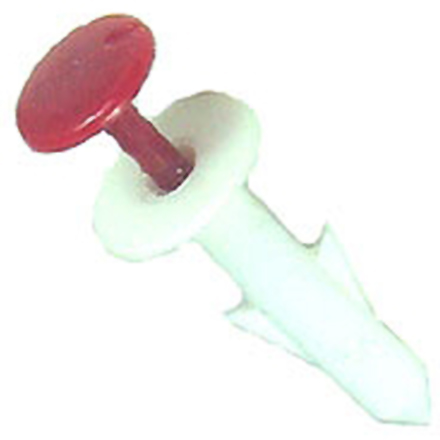
Typical popup timer that comes embedded in a turkey or sold separately.
Actually, calling this device a timer is inaccurate, thermal sensor is a better description. The oven and the turkey act more like the timer in this application. How the popup works will clarify this analogy.
Depending on the turkey it came stuck in or the one purchased separately, the popup timer measures approximately 2.2 to 3.5 inches long and consists of five components (see fig.1):
- Case
- Plunger
- Spring
- Metal tip on the end of the plunger
- Wax or soft metal (solder) pool
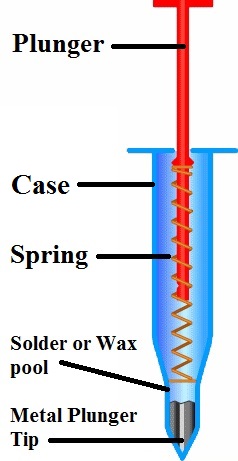
Fig. 1: Parts of a typical popup timer
Prior to cooking, the popup timer is in its armed state. The plunger’s metal tip is held in place by a soft metal or temperature-dependent wax, solder in some types, against the backward (upward) tension of the spring. The outer case that holds the plunger/tip and spring is made from a high-heat-resistant plastic.
The unit gets stuck in the rear of the turkey with the tip driven into the thickest portion of meat in the back breast area. During the cooking process, when the tip of the timer reaches about 168ºF, the wax or metal in the tip softens, releasing the tip from its grip and the spring pops the plunger up. Assuming all the side dishes and gravy are also ready, it’s chow time.
Is The Popup Timer Accurate?
If there a few slow news days prior to Thanksgiving, the media will most likely drag out this question. Are popup timers accurate to the degree? Probably not, with about a ±5ºF deviation from 168ºF.
Will the turkey be undercooked? If the popup came preinstalled and is not completely defective, the turkey will be cooked, overcooked is purely objective. Some chefs will swear on a stack of French cookbooks that 168ºF is overcooked and unpalatable.
Once again, options are few with fowl. It has been my personal experience on a number of occasions to be served raw turkey by those who claim to know how long a turkey should be cooked without technological aid.
Are Popup Timers Safe?
I could be wrong, but I’ve not heard of any catastrophes, tsunamis, or other tragedies surrounding turkey popup timers. You may tend to think that occasionally someone will try to cook a bird at 12,000ºF and the timer melts under a pile of turkey ashes, or deep fries the turkey and the timer shoots out like a rocket. You never know, perhaps those who were unfortunate enough to be in those situations were too embarrassed to report the incidents.
I’ve heard of a few turkey recalls in the past for reasons like antibiotic contamination, overdue expiration dates, botulism, e-coli, salmonella, not quite dead yet, etc. However, I’m unaware of any popup timer recalls, but there may have been a few.
Overall, popup timers are safe for proper use. Just don’t give them to small children and adults who behave as such to play with (hot or cold) and all will be well.
How About High-Tech Digital Meat Thermometers?
For truly accurate readings and cooking confidence, digital meat thermometers are a good choice. There are numerous types available ranging in price from around $15 to three and four figures. The more expensive ones are more accurate and generally offer extended temperature ranges and scales. However, these would be just a wee bit overkill for home cooking.
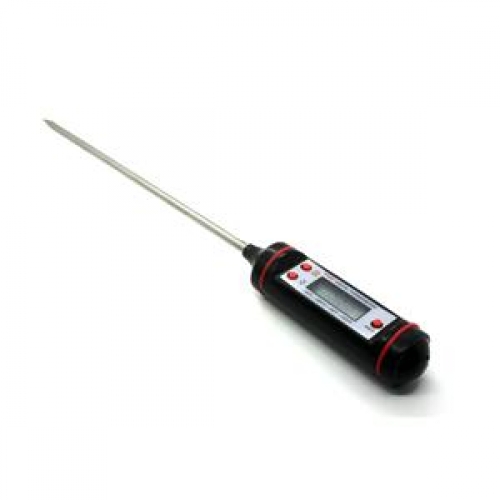
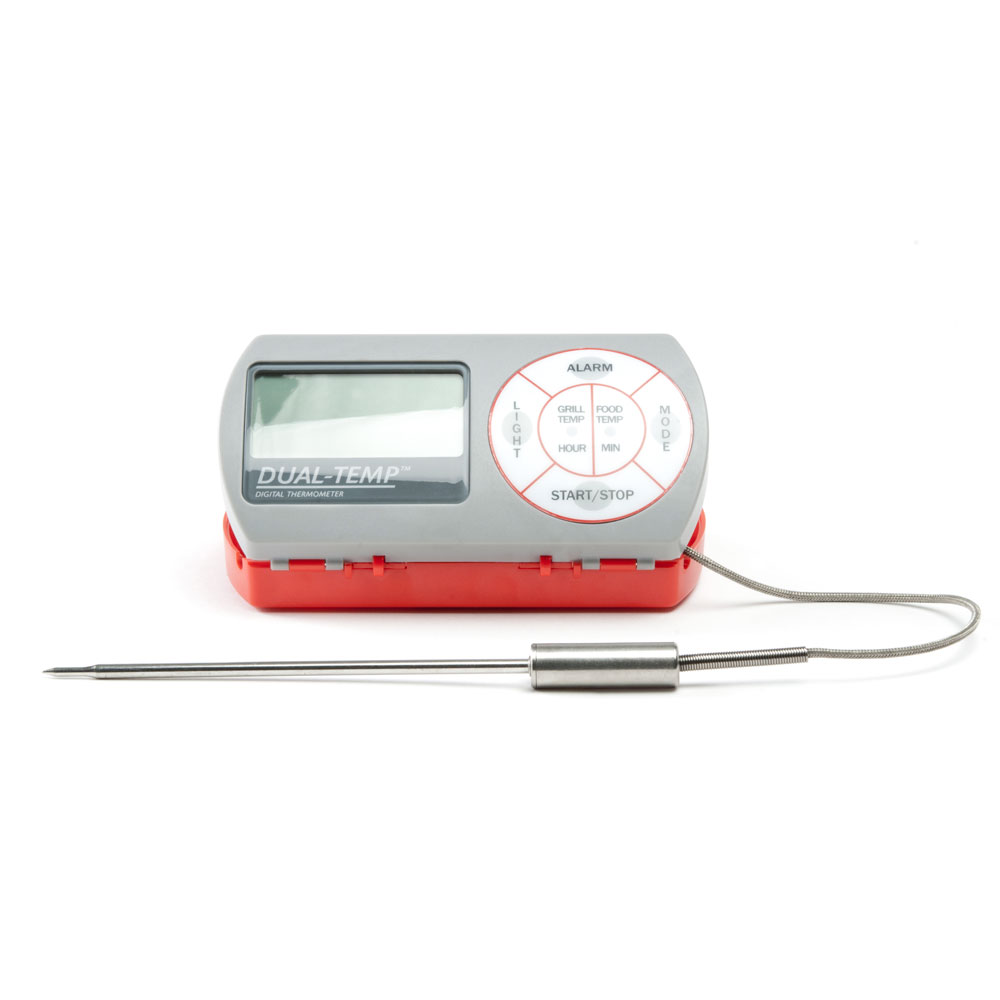
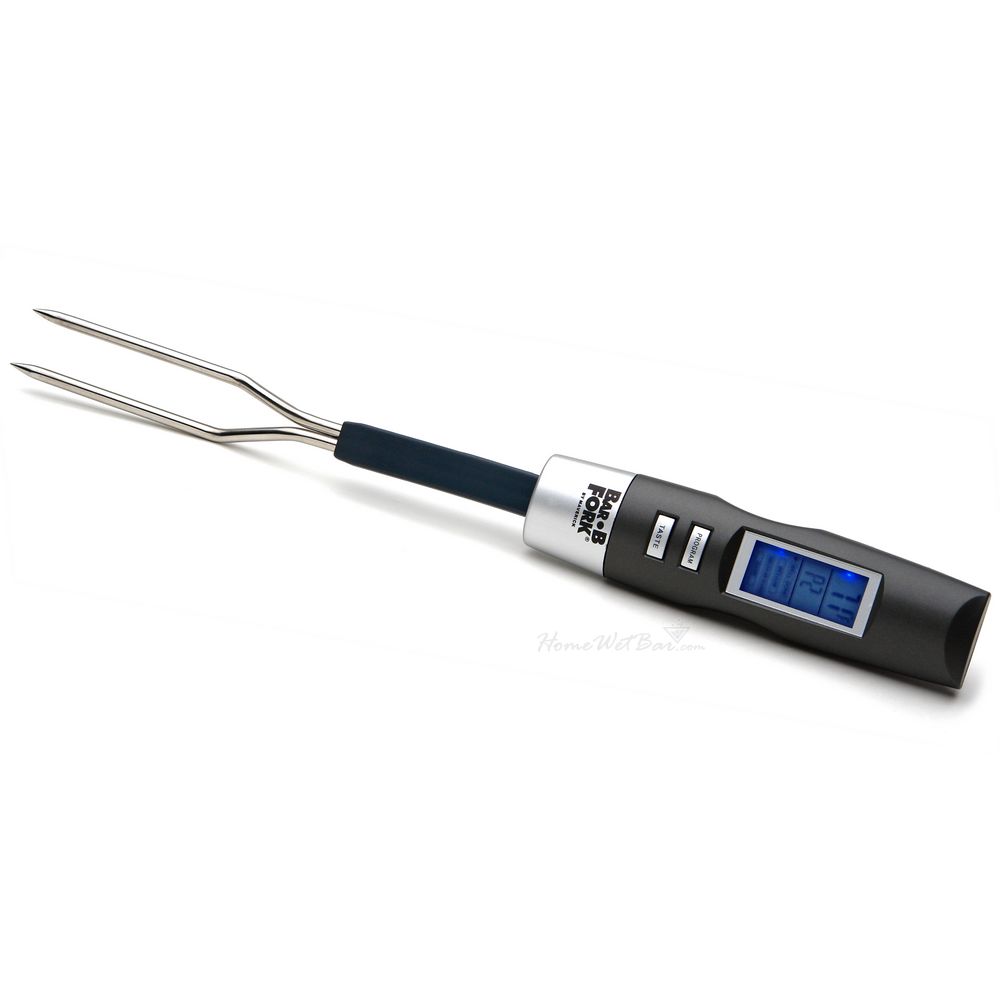
Some digital meat thermometer types
Of course, if one were truly concerned about over- or under-cooking their turkeys and other formerly living creatures, one could easily invite vegetarians over for dinner. Then get some good takeout when the guests leave. Cleanup is truly a cinch and no leftovers to refrigerate. Happy Thanksgiving. ~MD
RELATED STORIES:
VIDEO: How to use a digital thermometer in a turkey
Pop-up turkey thermometers are not always accurate!
Good reasons to use digital meat thermometers.
Temperature Sensors Market Worth $6.05 Billion by 2020
Atmel Launches Industry's First Wide-Vcc, Low-Power Temperature Sensor Family